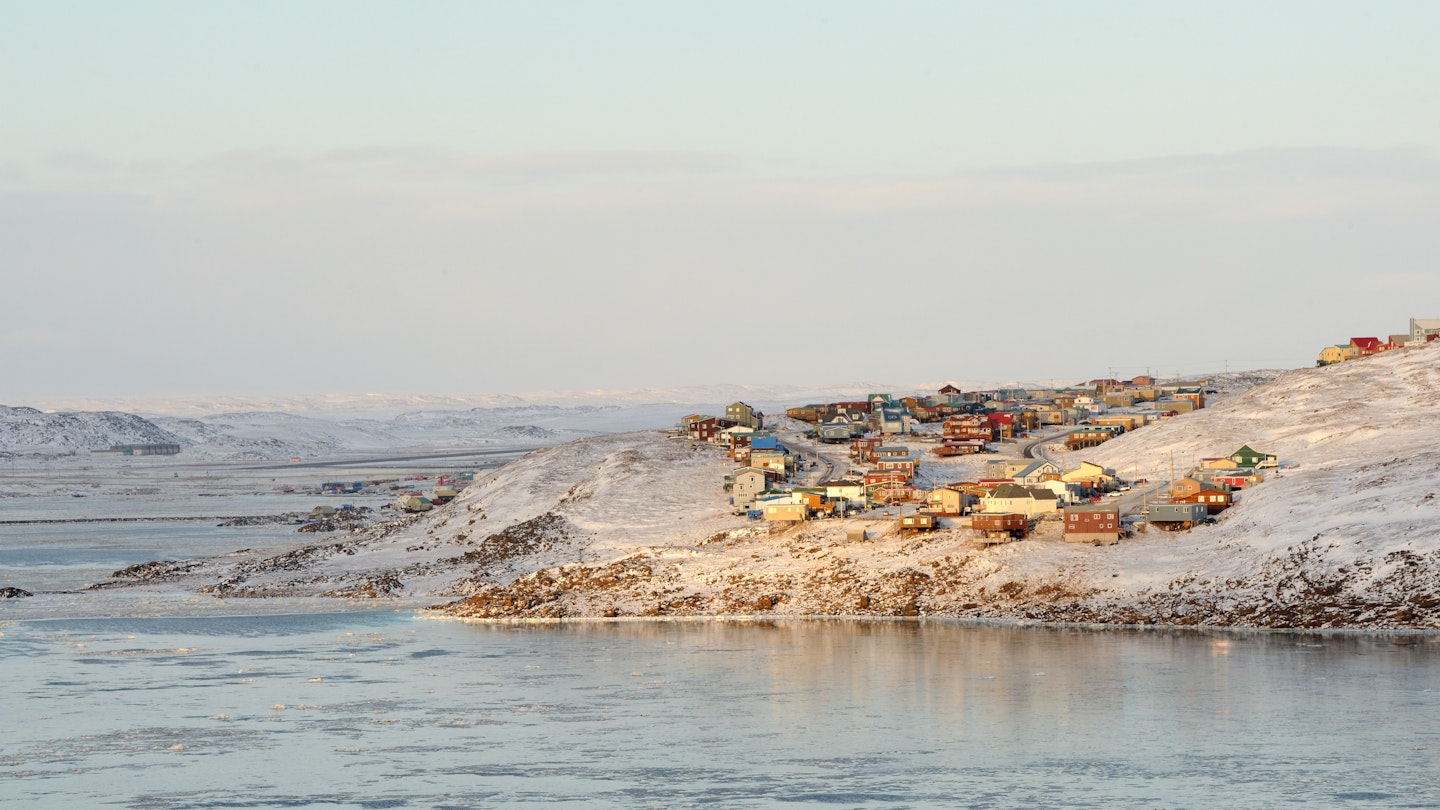Celebrating Spring at the Toonik Tyme Festival in Iqaluit
In Iqaluit, the capital of Canada’s territory of Nunavut, the afternoon temperature in April hovers around 5°F (-15°C) – not exactly weather for daffodils or cocktails on the terrace. However, this is springtime in a region where the sun barely rises above the horizon for months, and the arrival of this new season is something to celebrate.
Iqaluit celebrates the arrival of spring at the annual Toonik Tyme Festival, a two-week spring event highlighting the traditions and contemporary lives of Nunavut’s Inuit population, marking the return of the sun to the snow-covered far north.

What’s a Toonik?
Home to nearly 8000 people, Iqaluit is located on Baffin Island, surrounded by the North Atlantic Ocean and three hours by air from Ottawa, Canada’s capital. The town is one of 25 communities in Nunavut, which stretches across more than 800,000 sq miles (2 million sq km), roughly the size of Western Europe but with only 38,000 residents, more than 80% of whom are Inuit.
Iqaluit’s Toonik Tyme Festival takes its name from “Toonik,” referring to a member of the Tuniit people, who lived in the Arctic regions of eastern Canada and Greenland before the Inuit arrived roughly 1000 years ago. Launched in 1965, the event predates Nunavut’s establishment as Canada’s third territory in 1999.
The festival’s founder, Bryan Pearson, was not a Nunavut native. Born in Liverpool, England, in 1934, he arrived in Frobisher Bay, as Iqaluit was formerly known, in the 1950s. Regardless of his background, Pearson became involved in local government, ultimately leading to the creation of Toonik Tyme, designed to highlight the joy of spring.

Throat Singing and a Fashion Show
During the festival’s opening ceremony, local residents occupy chairs in the town’s curling arena. Many women don amauti, traditional parkas intricately designed, wearing them even amid the chill. Inuktitut, the Inuit language, resonates throughout as children joyfully navigate the space in front of the stage.
The ceremony alternates between Inuktitut and English, honoring community members while featuring local throat singers. A highlight from 2019’s opening event was a fashion show, where residents showcased handmade clothing from a sewing program operated by the Ilitaqsiniq Nunavut Literacy Council. This organization plays a crucial role in educating the community on sewing, fish smoking, snowmobile engine repair, and essential life skills for Nunavut.

From Seal Skinning to Snowmobiling
One objective of the Toonik Tyme Festival is to promote games and activities that reflect Inuit qaujimajatuqangit, or traditional knowledge. Activities range from dogsled racing to igloo building, alongside more contemporary events. Visitors should be aware that seal-skinning contests are part of the festival, which might be objectionable to some. The festival features concerts from local musicians and a traditional “country food” experience where attendees can taste seal meat, Arctic char, or caribou.
In addition, there are thrilling snow machine races, including a dedicated kids’ competition where children as young as seven can zoom around a course on scaled-down snowmobiles. Adults even join in, showcasing amusing skills as they navigate the course on children’s snow machines.
Other Spring Activities in Iqaluit
At the Unikkaarvik Visitor Centre, visitors can learn about the traditional Inuit division of the year into six seasons, each defined by the natural world. Auyarq (summer) is characterized by the sun never setting, ukiaksaaq (autumn) marks the shortening of days, while ukiaq is early winter, as ice begins to form on Nunavut’s bays. Midwinter, or Ukiuq, represents the “season of the great bear” (the polar bear), and upingarqsaaq, or late winter/early spring, is a time to travel to the floe edge, where wildlife gathers. Finally, upingaaq (spring) is when the ice begins to break up and the sun returns.
Several guides in Iqaluit provide springtime excursions to the floe edge, including Inukpak Outfitting, which offers thrilling adventures across the solid ice of Frobisher Bay to observe seals and Arctic birds as travelers approach sections of open water.
In town, as you walk among the vibrantly colored low-rise buildings, consider visiting St Jude’s Igloo Cathedral, whose distinctive curved shape resembles traditional Inuit igloos. Alternatively, explore Inuit art at the Nunatta Sunakkutaangit Museum, which showcases both traditional and contemporary works.
No visit to Iqaluit would be complete without sampling the offerings at Canada’s northernmost craft brewery, Nunavut Brewing Co. Guests can enjoy their Floe Edge lager or Aupaqtuq red ale while toasting to the sun’s return to the Canadian Arctic.
This year’s Toonik Tyme Festival in Iqaluit runs April 9–19, 2020.





